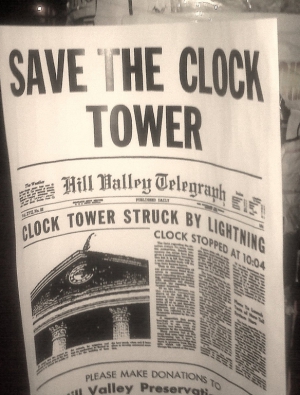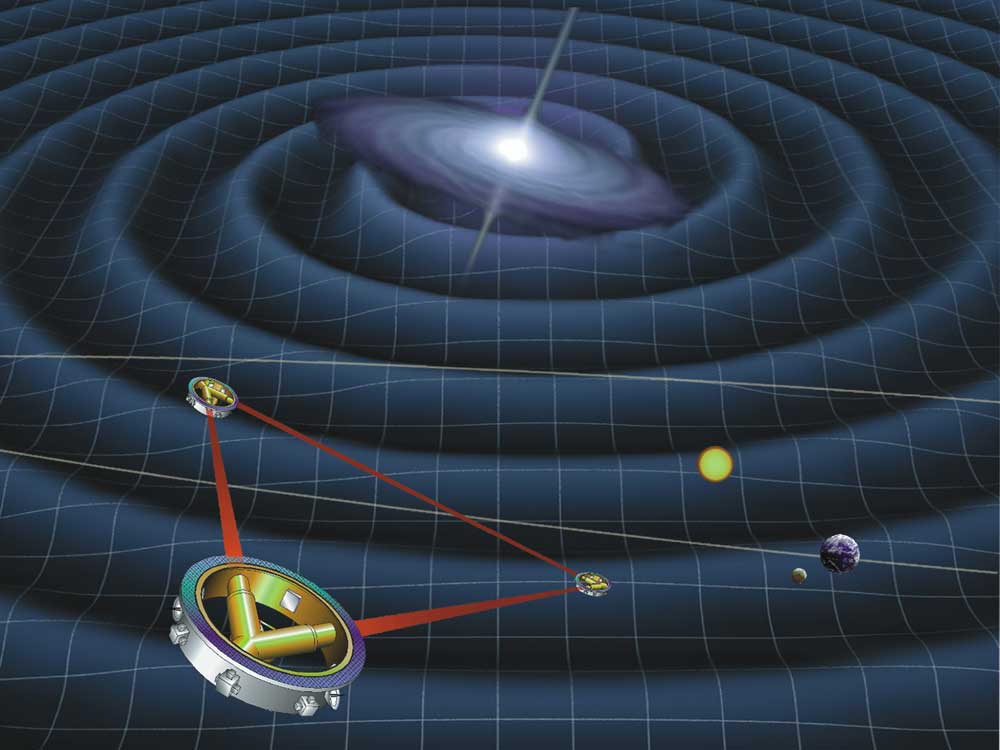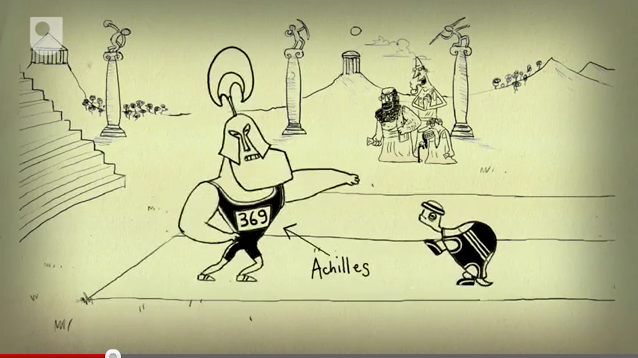
In the Back to the Future films, Marty McFly travels backwards and forwards in time with the help of Doc Emmett Brown and his souped up DeLorean car. But is time travel really possible?
The simple answer to this question is: Yes! In fact as you read this, you are travelling through time at a rate of one second per second. OK, that’s not quite the answer you were expecting, but it is time travel nonetheless – we can’t help but travel through time, because that’s the nature of time itself. It flows relentlessly from past to future, and the instant of ‘now’ is an infinitesimally short period of time that it’s impossible to remain in. However it turns out that the rate at which time flows forwards is not necessarily a fixed quantity.
So, what about travelling into the future or the past – is that sort of real time travel possible? Well, the first of these is certainly possible, but as far as we know, the other is impossible to achieve.
Time travel into the future is easy – in principle at least. Albert Einstein’s theory of special relativity, which he devised in 1905, shows that ‘moving clocks run slow’. This is an effect known as time dilation. Quite simply, if a clock moves at a constant speed with respect to a stationary observer, that observer would see the moving clock ticking more slowly than one at rest next to her. And the faster the clock moves, the more slowly it ticks. This isn’t just a trick either – all physical or biological process, or anything at all that you care to measure, would indeed happen more slowly when moving rapidly, as viewed from a stationary view point.
 Special relativistic time dilation has been measured many times in laboratory experiments, and the results agree precisely with Einstein’s predictions. One such example concerns the subatomic particles known as muons. These are a somewhat heavier counterpart of the electron which decay into electrons with a typical lifetime of around two microseconds. A ready source of muons is from cosmic rays (high energy nuclei originating from the depths of space) that strike atoms in the Earth’s upper atmosphere. If the number of muons liberated in the upper atmosphere is measured at the top of a mountain, then knowing the lifetime of a muon and the fact that they are travelling close to the speed of light, it’s possible to calculate the proportion of muons that should survive to be measured at sea level. However, far more muons survive to reach sea level than would be predicted based on non-relativistic assumptions. This can be understood by the realisation that, for the rapidly moving muons, time runs more slowly, so allowing more of them to survive the trip.
Special relativistic time dilation has been measured many times in laboratory experiments, and the results agree precisely with Einstein’s predictions. One such example concerns the subatomic particles known as muons. These are a somewhat heavier counterpart of the electron which decay into electrons with a typical lifetime of around two microseconds. A ready source of muons is from cosmic rays (high energy nuclei originating from the depths of space) that strike atoms in the Earth’s upper atmosphere. If the number of muons liberated in the upper atmosphere is measured at the top of a mountain, then knowing the lifetime of a muon and the fact that they are travelling close to the speed of light, it’s possible to calculate the proportion of muons that should survive to be measured at sea level. However, far more muons survive to reach sea level than would be predicted based on non-relativistic assumptions. This can be understood by the realisation that, for the rapidly moving muons, time runs more slowly, so allowing more of them to survive the trip.
And this is what makes time travel into the future possible. Imagine that you boarded a spaceship to the star Tau Ceti, which is 12 light years away. Your spaceship can travel at 80% of the speed of light, which is about 240,000 kilometres per second. As soon as you get there, you turn round and come straight home. Back on Earth, 30 years have passed by the time you return, but on the spaceship, time has passed more slowly. To you on the spaceship, only 18 years would have passed. In effect, you would therefore have travelled 12 years into the future.
The faster you travel, the further into the future you can jump. For instance, in order to jump 1000 years into the future, but only have 1 year elapse on your spaceship, you would need to travel at 99.99995% of the speed of light.
So much for time travel into the future – but why is time travel into the past so difficult? This all comes down to what’s known as causality and is perhaps best summed up by the Grandfather paradox. If time travel into the past were possible, then you could (if you really wanted to) travel into the past to a time before your parents were born and kill your Grandfather. Then your parent would never be born, so neither would you, so you couldn’t travel into the past to kill your Grandfather after all… Because paradoxes like this simply don’t occur in the Universe (as far as we know), time travel into the past cannot be possible.
My favourite exploration of this time travel paradox is in a short story by Robert A. Heinlein from 1958 called “All you zombies”. The plot concerns a character who is eventually revealed (by a series of time travel experiences) to be both his own father and mother. Thankfully, such paradoxes seem not to occur in the real world or, if they do – like Marty McFly when he ensures his parents really did get together in 1955 – people just make sure things happen in the past the way they were meant to!
This article came Back to the Future from 2013 when it was originally written to celebrate the 50th anniversary of Doctor Who - discover more perspectives on science fiction and time travel.



Rate and Review
Rate this article
Review this article
Log into OpenLearn to leave reviews and join in the conversation.
Article reviews